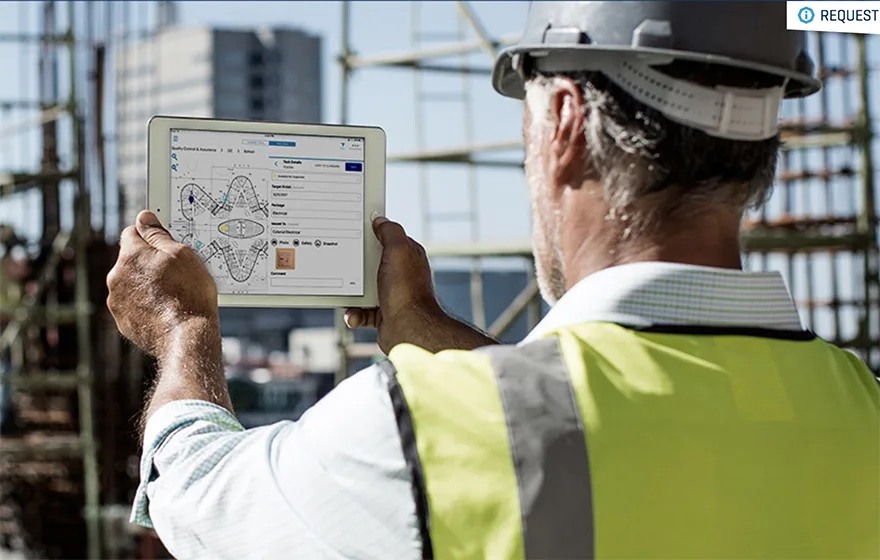Top 10 benefits of BIM

Construction companies worldwide, both large and small, are increasingly adopting BIM technology, and there are compelling reasons for this. As adoption continues, companies continue to see additional benefits of BIM, all of which are vital to the success and maximizing productivity throughout a project.
What is BIM?
BIM (Building Information Modeling) is a process that enables construction companies to create, manage, and optimize all project information digitally. This process includes the building information model and the digital description of the building plans or assets.
Unlike the traditional building modeling process, this modern, digitized process enables stakeholders to select and view accurate building information that helps the builders or and stakeholders optimize their actions, bringing greater value for the assets/projects.
The construction industry is undergoing a continuous digital transformation. The way we compute, store, and manage information has changed, creating a complete digital revolution in the construction industry. BIM is simply a way of working that more accurately manages and models information in a team environment. Construction workers’ use of BIM technology creates unique values for individual project assets.
The BIM software marketplace is relatively saturated with tools that include similar features and functions. However, most of these tools save firms money and increase productivity when leveraged correctly. Research shows that a large portion of construction companies using BIM processes and tools experience fewer construction errors, and the overall building information modeling market is projected to grow by 13.08% from 2024 to 2029 in the U.S. alone.
BIM is most commonly used throughout the construction industry, including the architectural sector, engineering sector, and general construction.
What are the benefits of BIM?
This raises a question: what are the actual benefits of BIM? The benefits of using BIM tools and processes are substantial and multifaceted. Beyond enabling construction companies to execute error-free projects, the benefits include, but are not limited to:
- More accurate and streamlined planning
- Early clash detection capabilities
- Improved project visuals
- Increased overall work quality
- Simplified access to building information
- Lower number of construction errors and delays
- Improved construction safety and health
- Decreased risks and costs to execute projects
- Extensive construction timeline management
- Increased construction productivity
Now, let us discuss these 10 benefits of BIM organized by project phase to gain a better understanding of when and how each benefit applies throughout the construction lifecycle.
Benefits in planning & design phase:
How does BIM make planning more precise?
Unlike traditional methods using computer spreadsheets, BIM collects and automates construction information from the model. This means that error-prone manual work is replaced by automated data generation. Here are some common instances of how BIM helps in daily construction:
- It extracts or exports material information, including the types of material needed and the quality, quantity, and dimensions, all from the 3D model.
- It accurately estimates cost from the list of materials and other model information.
- It determines expenses and necessary payments during construction using BIM tools and processes.
BIM also goes beyond 3D modeling by integrating cost data directly into the model (5D BIM), which enables automatic quantity takeoffs and real-time budget tracking. Cost implications become immediately visible as design changes are made, allowing teams to make informed decisions about materials and specifications before construction begins.
How does BIM enable early clash detection?
No matter how good a model appears, there is still a chance it may not reflect reality accurately. While the construction model may look perfect, site conditions will ultimately determine its accuracy. This is where BIM proves invaluable. It helps identify model errors such as potential clashes between electrical cables, sewer pipes, and other building systems.
Beyond basic spatial conflicts, modern BIM clash detection identifies interference between different building systems, structural conflicts, and even potential maintenance access issues. This comprehensive analysis prevents costly field changes and ensures that all building components are easily installed and serviced throughout the building’s lifecycle.
How does BIM improve project visualization?
Clients sometimes sketch how they want their building project to look, but the design concepts in their drawings are often unclear, even to qualified employees. BIM enables the creation of 3D models for easy visualization, making presentations clearer and more effective.
This visualization becomes even more powerful when combined with a common data environment (CDE) that ensures all stakeholders are using the same, current version of the model. The introduction of a CDE eliminates confusion from outdated drawings and also enables real-time collaborative design sessions in which multiple team members can contribute at the same time.
Benefits in construction phase:
How does BIM deliver higher-quality construction work?
Producing a high-quality construction project requires a well-synchronized and reliable model. This is achieved when construction workers collaborate with developers, distributing BIM tools so that the entire project is monitored in real-time and executed more effectively.
Quality control is further enhanced through BIM’s ability to maintain detailed records of all design decisions, material specifications, and construction methods. It creates accountability throughout the construction process and enables teams to reference exact specifications when questions arise, ensuring the consistent execution of the original design intent.
How does BIM simplify access to building information?
With cloud server storage now standard, the era of storing information on local disks has ended. Cloud storage is compelling because building information is accessible from anywhere in the world by authorized personnel. Additionally, it stores data indefinitely, which prevents various instances of data loss.
Modern BIM platforms extend this accessibility to mobile devices, allowing field teams to access current drawings, specifications, and issue updates directly from construction sites. This real-time field connectivity eliminates delays caused by outdated paper drawings and ensures that workers always have the most current project information.
How does BIM reduce construction errors and project delays?
BIM tools massively reduce the number of errors in models and on construction sites. Errors occur when design offices transfer 3D models through more manual processes, such as the use of paper. BIM eliminates these issues by digitizing the information and data transfer process.
Digital workflows also enable better version control and change management, ensuring that modifications are communicated instantly to all stakeholders. This eliminates the common issue of teams working from outdated information and reduces rework caused by miscommunication.
How does BIM improve construction safety and health?
While building is important, building safely is vital. Before venturing into any building projects, worker safety must always take precedence, and BIM can help with this. The same goes for occupational safety and health, as well, with BIM enabling better construction conditions and a lower number of on-site issues. Both risk and job safety analysis (JSA) are generally required before difficult tasks are undertaken.
BIM enables detailed safety planning through clash detection that identifies potential hazards before workers encounter them, and 3D safety simulations to help plan safe equipment routes and workspace layouts. This proactive approach significantly reduces on-site accidents and improves overall project safety performance.
Post-construction & operational benefits:
How does BIM lower project risks and costs?
Many leading construction firms that leverage BIM have seen major cost-savings in different forms since the implementation. For example, by reviewing the project at an early stage, they are able to reduce the number of unused building materials and avoid wastage. Many have also found that BIM also helps to reduce labor expenses.
BIM also supports sustainability goals by enabling accurate material waste calculations, energy performance modeling, and environmental impact assessments during the design phase. This allows teams to optimize building performance and reduce environmental footprint while maintaining current cost efficiency values.
How does BIM enable extensive timeline management?
BIM integrates time as a fourth dimension (4D BIM), linking every building component to the construction schedule for precise project sequencing. This enables teams to visualize the entire construction process before breaking ground, identify scheduling conflicts early, and clearly communicate timeline expectations to all stakeholders.
When delays occur, 4D BIM helps teams quickly assess impacts and adjust schedules accordingly, minimizing project disruptions.
How does BIM increase construction productivity?
Building sector productivity has increased significantly since the introduction of BIM processes and accompanying software. This productivity increase is a result of the automation of tasks, the introduction of new technology into the industry, and the expansion of BIM practices and competence.
This productivity gain extends to automated processes like quantity takeoffs, drawing generation, and specification updates, which previously required manual effort. BIM’s ability to automatically update all project documents when changes occur eliminates redundant work and ensures consistency throughout all project deliverables.
What are common challenges in the implementation of BIM?
While BIM offers substantial benefits, successful implementation also means addressing several common challenges that construction companies face during adoption.
How do companies overcome lack of BIM experience?
Many construction teams lack experience with BIM software and processes. The solution involves investing in comprehensive training programs for staff and starting with smaller pilot projects to build competence gradually. Companies may also consider partnering with experienced BIM consultants during the initial implementation phase.
How are BIM software integration issues handled?
Different software platforms often have issues with efficient communication, creating data silos. To address this, companies need to research software compatibility before purchase, establish clear data exchange protocols, and choose BIM platforms with support for open standards like IFC (Industry Foundation Classes) for better interoperability.
What about high initial implementation costs?
BIM software licenses, training, and hardware upgrades all require significant upfront investment. Companies can manage costs by implementing BIM in phases, starting with essential tools, and calculating the long-term ROI from reduced errors, faster project delivery, and improved efficiency to justify the initial expense.
How are effective BIM protocols established?
A lack of clear protocols results in teams using BIM inconsistently, reducing its overall effectiveness. In these situations, it is recommended to establish standardized naming conventions, file management procedures, collaboration workflows, and regular model quality checks to ensure that all team members follow the same processes.
Comparison table of major challenges in implementation of BIM
To simplify the material, we have prepared a simple comparison table that highlights common issues with BIM implementation and methods for their resolution:
| Challenge | Impact | Solution strategy |
| Lack of experience | Slower adoption, inefficient use | Training programs, pilot projects |
| Software integration | Data silos, workflow disruption | Open standards, compatibility research |
| High initial costs | Budget constraints, delays in implementation | Phased rollout, return on investment calculation |
| Protocol development | Inconsistent usage, reduced effectiveness | Standardized procedures, quality checks |
How does digital coordination software enhance the benefits of BIM?
Modern BIM implementation requires more than just modeling software – it demands comprehensive coordination platforms that connect teams, data, and processes throughout the project lifecycle.
Value of digital coordination and common data environments
While BIM processes deliver substantial value throughout the project lifecycle, specialized coordination software can amplify these benefits by providing a centralized platform for collaboration and communication purposes. BIM coordination platforms enable real-time visual issue tracking, streamlined communication between stakeholders, and seamless information sharing throughout all project phases. These tools eliminate the common issue of fragmented communication, ensuring that all team members are working from the same accurate, up-to-date model regardless of their location or role in the project.
The true value of BIM coordination extends far beyond construction completion. Modern projects require long-term planning about facility management, operations, and maintenance. Digital twins are identical replicas of construction assets or structures for the purpose of gathering various insights into the construction process. They are created during the BIM process and become invaluable assets for building owners, facility managers, and maintenance teams. With that being said, this post-construction value is realized only when the coordination platform maintains data integrity and accessibility throughout the building’s entire lifecycle, from initial design through decades of operations.
Revizto’s comprehensive BIM coordination platform
Revizto stands out as a comprehensive BIM coordination platform that specifically addresses both construction collaboration and long-term facility management needs. Beyond standard issue tracking and model coordination, Revizto enables the creation of detailed digital twins that facility managers can use for space planning, maintenance scheduling, or asset management.
The platform’s visual collaboration tools allow facility teams to document issues, track maintenance histories, and plan renovations using the same rich 3D models that guided the original construction. This continuity from construction to operations ensures that the substantial investment in BIM modeling continues to deliver ROI throughout the building’s operational life, which makes Revizto an ideal choice for organizations that are focused on long-term building performance and efficiency.
How does BIM enable advanced construction technologies?
BIM’s digital foundation makes it an ideal platform for integrating cutting-edge construction technologies that are already transforming the industry in major ways. By providing accurate and data-rich models, BIM enables advanced manufacturing processes and smart building systems that enhance efficiency, quality, and long-term performance.
Prefabrication and off-site manufacturing
BIM revolutionizes prefabrication by creating precise digital models that manufacturers can use to produce building components off-site with exceptional accuracy. These detailed 3D models provide exact dimensions, material specifications, and connection details, enabling automated manufacturing processes that reduce waste and improve quality control. Components arrive on-site ready for assembly, which significantly reduces construction time and weather-related delays.
The integration of BIM with prefabrication also enables better coordination between design teams and manufacturers, ensuring that off-site components fit perfectly with on-site construction. This approach substantially reduces material waste compared to traditional construction methods while allowing for better quality assurance, as components are manufactured in controlled factory environments. The result is faster project delivery, reduced labor costs, and consistently higher-quality building components.
IoT integration and smart building technologies
BIM models provide the essential framework for integrating Internet of Things (IoT) sensors and smart building technologies that generate real-time data throughout construction and operations. During the construction phase, IoT devices are able to:
- Monitor concrete curing
- Track equipment locations
- Ensure environmental conditions meet specifications
All of the data received from IoT hardware is linked to specific components of the BIM model. This integration creates a comprehensive data ecosystem where physical building performance is continuously measured and compared against design intentions.
The real power of IoT integration appears when all this sensor data flows into BIM coordination platforms, forming data-rich digital environments for facility managers to navigate and analyze. Temperature sensors, energy meters, occupancy detectors, and equipment monitors feed continuous streams of information that reveal how buildings actually perform versus how they were designed to perform.
This technological integration turns static BIM models into dynamic, data-driven tools with support for evidence-based decision-making for everything from energy optimization to space planning. They serve as the essential data foundation that coordination platforms like Revizto employ for visualization and management purposes for guaranteed long-term building success.
Conclusion
BIM’s numerous benefits have made its tools essential for construction companies of all sizes. Beyond helping to detect errors in building models, BIM greatly improves the odds of project success and leads to better outcomes on any construction project. It represents a true technological evolution in construction.
Key takeaways
- BIM transforms construction by creating comprehensive digital models that integrate 3D design, cost data, and scheduling information for better decision-making throughout project lifecycles.
- Early clash detection and visualization capabilities prevent costly field changes and improve communication between all project stakeholders from design through construction.
- Digital coordination platforms and common data environments eliminate fragmented communication, ensuring that teams always work from current, accurate project information.
- BIM implementation requires the addressing of challenges like training needs, software integration, and upfront costs, but it delivers substantial ROI through reduced errors, faster delivery, and improved efficiency.
- Advanced technologies like prefabrication, IoT integration, and predictive maintenance extend BIM’s value beyond construction into long-term facility operations and smart building management.
- The combination of BIM processes with specialized coordination software creates digital twins that support data-driven facility management and continuous building optimization.
Unlock seamless BIM collaboration — request your demo today


